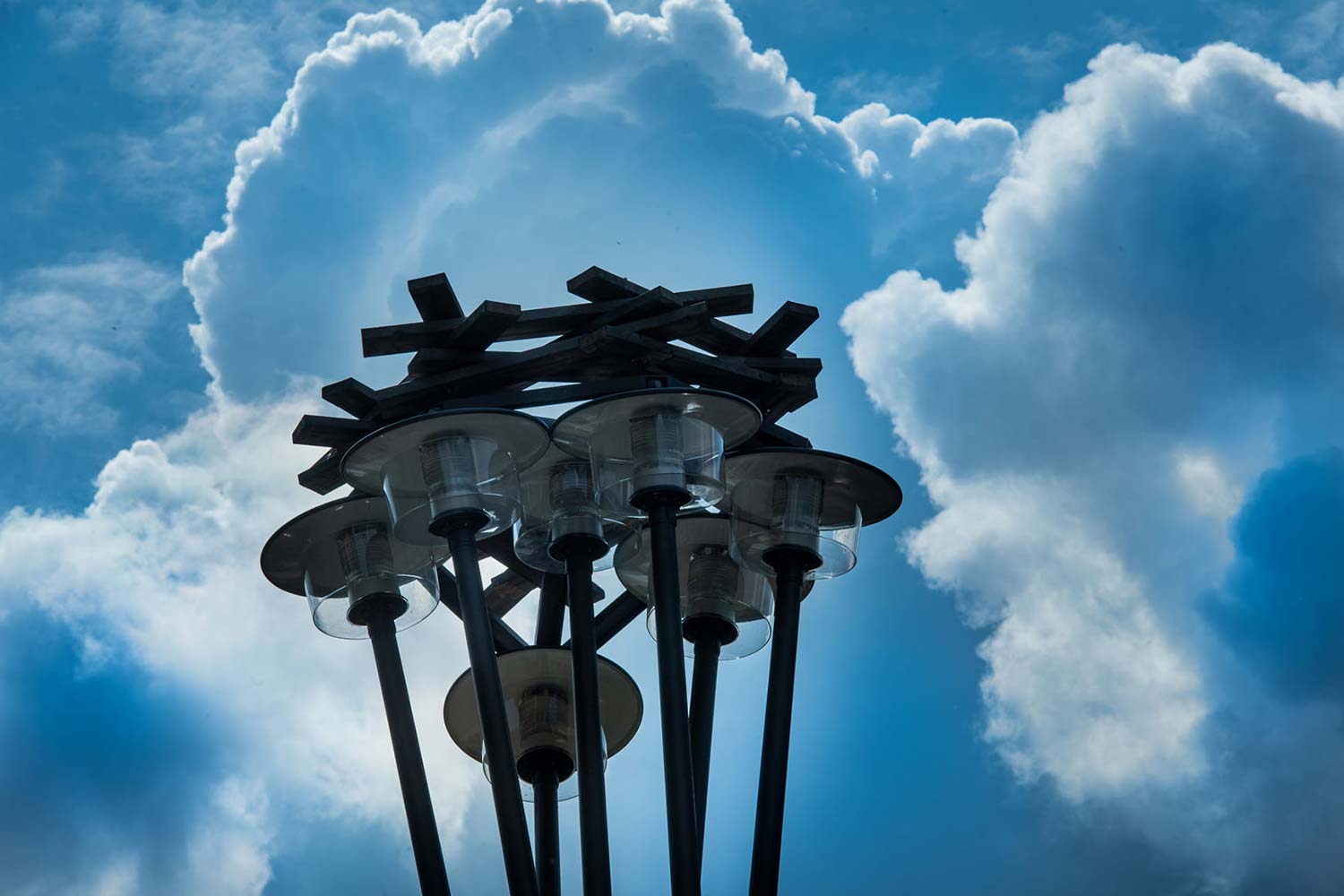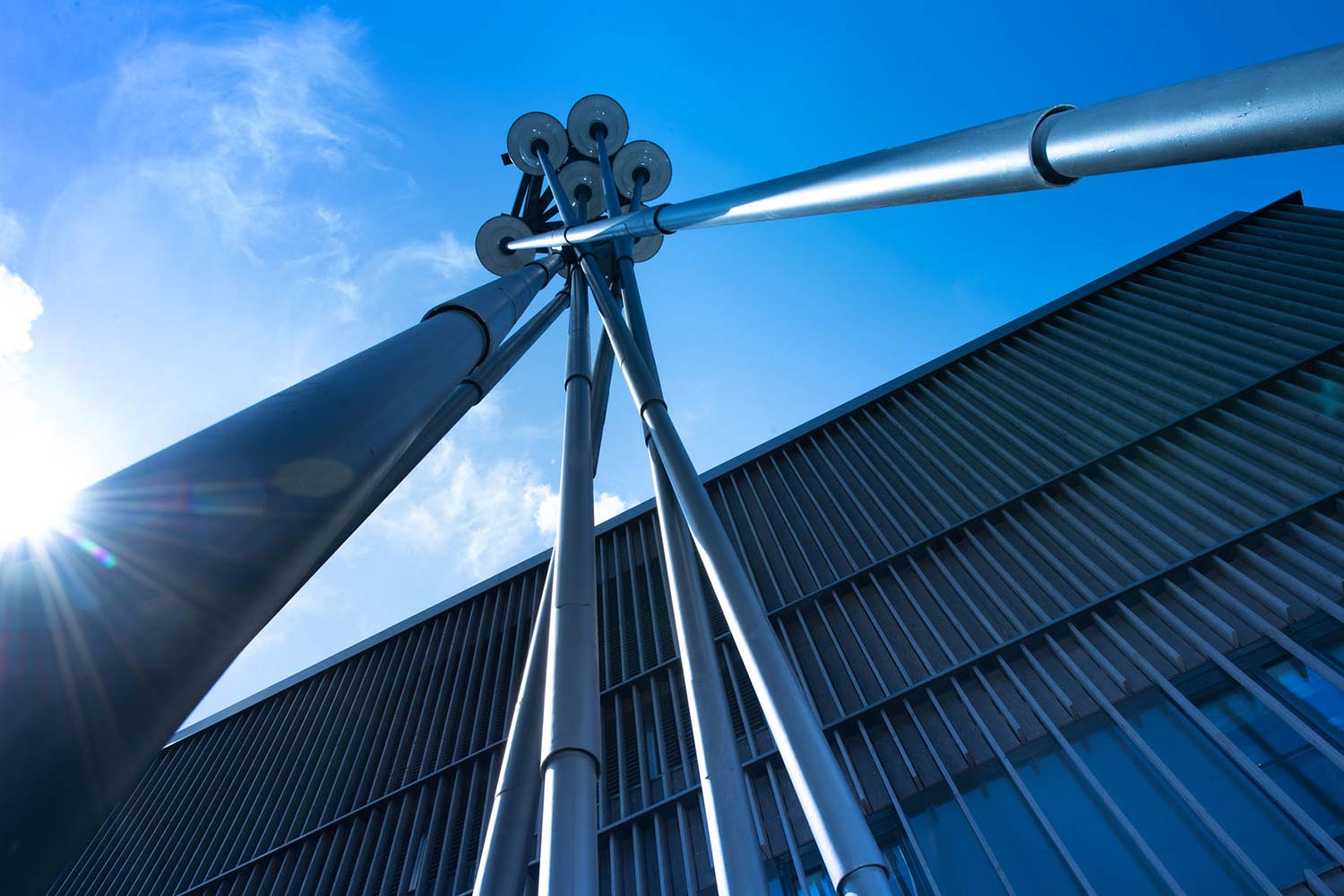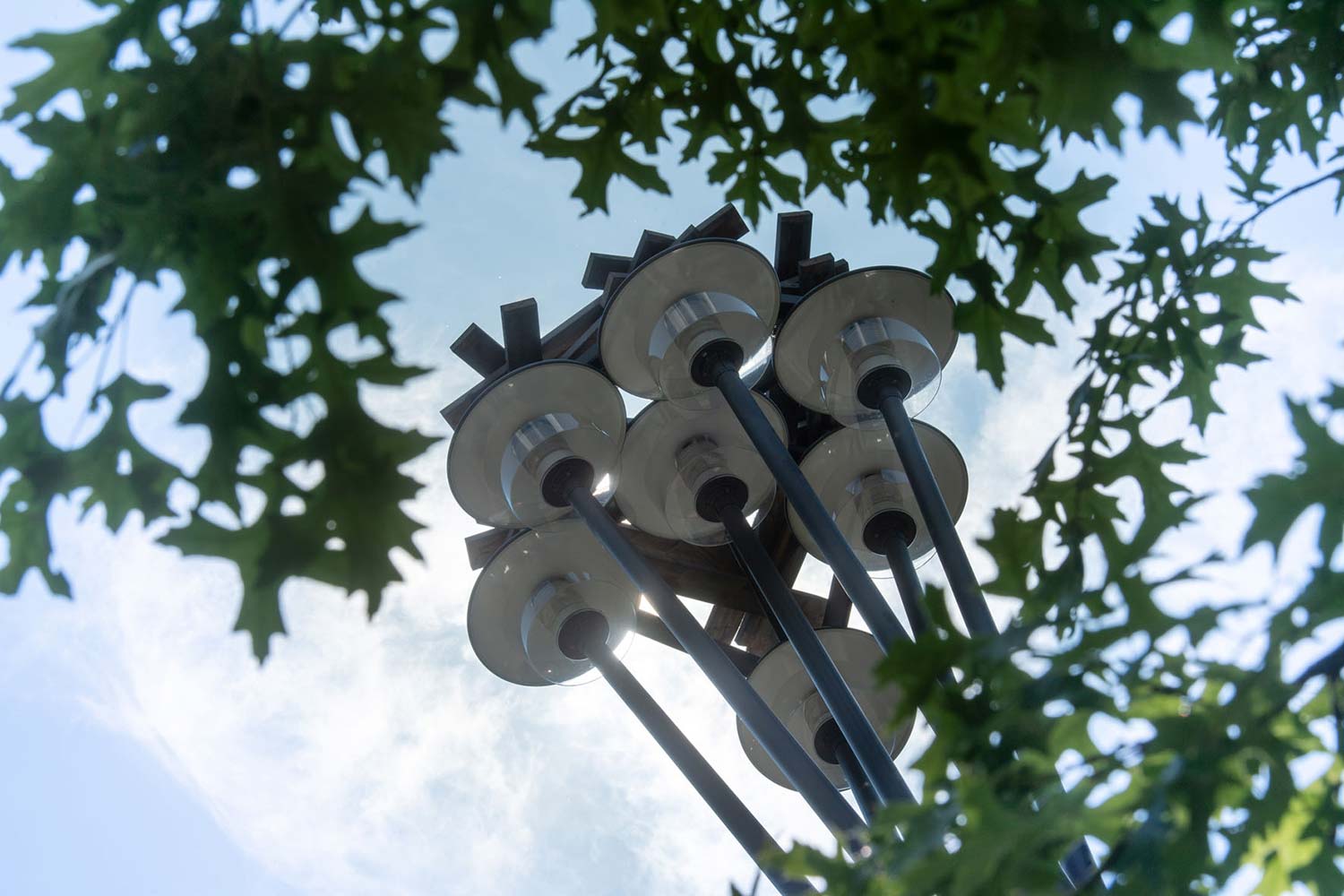6Kunst[Nest
Fritz Balthaus
2017, Street lamps, Wood

The next sculpture on the tour stands in front of Building C92, the Research Institute for Experimental Medicine. It is on the right side as you turn onto the street leading to the building. ”Kunst[Nest” (Art[Nest), a work by Fritz Balthaus, stretches as high as the building and is a stork tower made of street lamps and squared lumber.
Fritz Balthaus was born in Oberhausen in Rhineland in 1952; he lives and works as a sculptor in Berlin and Switzerland. He has taught at numerous art conservatories: in Luzern, in the Art and Architecture Department of the TU Berlin, the Conservatory of Art in Berlin-Weissensee, as professor of art and sculpture at the University of the Arts in Berlin and the Conservatory of Art in Bremen.
Many of his works are on public display; others have appeared in solo exhibitions or belong to collections in Germany and abroad.
Balthaus works with materials obtained in the immediate vicinity – as do storks. ”Kunst[Nest” is built of the types of streetlamps seen across the campus: he has stacked the hollow, cone-shaped masts on each other until they tower over the adjacent buildings. To this structure he has added wooden strips of the type seen in the facade of the house behind the work. The height and the platform mounted on the lamps are intended as an invitation to birds to build their nests here.

Balthaus uses the piece to direct viewers‘ attention to their immediate surroundings: the green health campus in Buch, to the northeast of Berlin.
Another feature is the close proximity to water, to nature – like the topography of lakes and the biotope of the moor – but also to artificial structures: the former sewage farms, which cleaned waste water before the introduction of sewage treatment plants. Alongside the natural waters, they offered breeding and nesting sites to many animals “, such as storks. Most stork species live near lakes, marshes and riverbanks. They gather material for their nests from their immediate surroundings. Now most of the sewage fields have disappeared, which has led to a simultaneous decline of animal breeding in the area. This, alongside plans to rezone the moor in Buch for construction, inspired Balthaus to build the ”Kunst[Nest”.
The sculpture is an example of a positive type of interaction between humans, animals and nature. On the one hand it is an appeal to politicians to reconsider the rezoning of the moorland in Buch. Another way of seeing it is as an appeal to scientists to respect frameworks for a sustainable cohabitation of humans and animals.
The success of the work does not depend on whether storks actually take advantage of the nest to once again raise their broods on the Buch campus. Their decision whether to do so itself is an integral part of the concept of the artwork. Should they decline, this could be seen as a warning that a stork habitat has disappeared for good. But if they do make the campus their nest place, the work can represent a successful act of natural preservation. The decision on the meaning of ”Kunst[Nest” will ultimately lie with the storks.
From this perspective, the work offers a possibility of different truths. This can and should serve as a contribution to the discourse between art, science and ecology. The artist calls attention to the surroundings and the ”green campus” model through the use of lamps that draw attention and serve as dramatic elements of the piece.
The sculpture was constructed with the help of public funds known as ”Kunst am Bau” for the promotion of art and architecture.
You can find an interview with Fritz Balthaus (in german) here.
